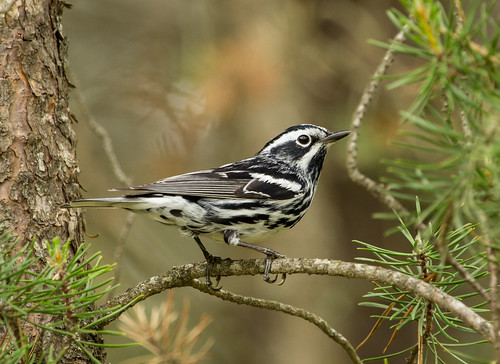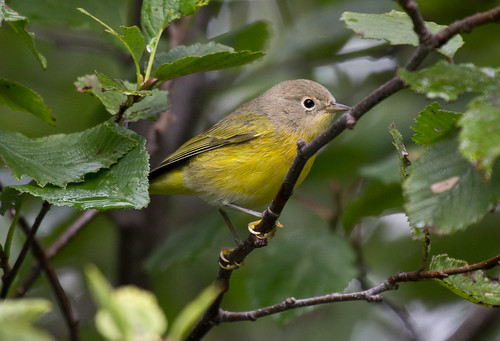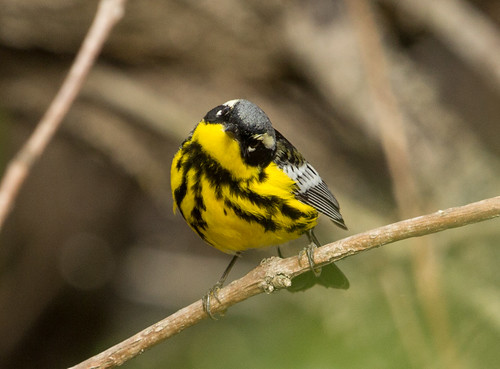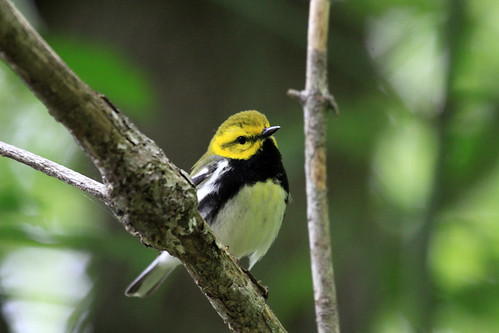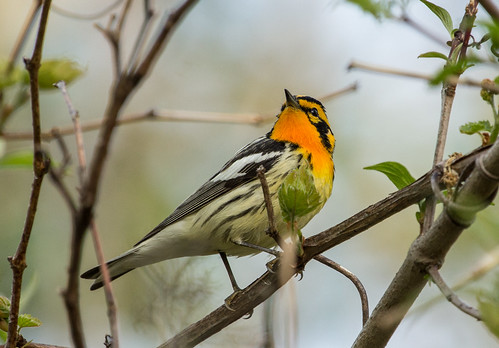When I was a college elementary education major, one of the
most valuable things I learned was to never tell kids how easy learning
something would be, even if it was something extremely easy for me. When
teachers set up an expectation that a new skill or subject is simple, kids who
have trouble with it will feel stupid, and kids who do master it won’t feel
like they’ve accomplished anything special. I learned that self-esteem comes
not from getting pats on the back but from worthwhile accomplishments and
mastery of worthwhile subjects. As a teacher, that was the one simple rule I
tried never to forget.
Roger Tory Peterson must have been thinking along those
lines when he coined the term “confusing fall warblers.” Most of the warblers
we see in spring are adult males, who catch our attention with their colors and
songs. In fall, warblers don’t sing, and young of the year and adult females together vastly outnumber adult males. And adult males of some species have molted into duller
feathers for winter. Knowing that identifying warblers in fall was not as
straightforward as in spring made it feel like a fun challenge. Unfortunately,
some people think identifying warblers in any season is a scary ordeal.
I started birding in the spring of 1975, and after being out
virtually every day, ended the season with 5 warblers on my lifelist—Black-and-white,
Nashville, Magnolia, Black-throated Green, and Blackburnian. It was tricky amassing
even this little list—I’d see a warbler in a tree, try to notice the basic
color pattern and whether it had an eye line, eye ring, wing bars, and other
distinctive marks, and then search through the warbler pages hoping to find one
with those characteristics. Most of the time when I found a bird in the book that
might have been it, I’d look up and the bird would be gone. One time I saw a warbler
with bright yellow beneath and black streaks down the breast forming what
looked like a necklace. I was sure it didn’t have wing bars and so according to my field guide it had to be a Canada Warbler, but when I looked up in the same branch to confirm my ID,
I saw that it had huge wing bars forming a white patch. I searched my book again, and now it was a Magnolia Warbler. This
time I managed to go back and forth between the bird and field guide several
times to confirm. In retrospect, I’m sure the bird I originally saw really was a Canada, but with my
limited experience, I wasn’t quick enough to take everything in, and didn’t
know enough about how migrating warblers associate in mixed flocks to even imagine I’d actually seen two different species.
I spent every free minute that summer birding, and by the
end of July had added another four warblers: the Ovenbird, Common Yellowthroat,
Yellow Warbler, and American Redstart. Now I was excited about the challenges
of those “confusing fall warblers.” I managed to tease out the identities of
another four species that fall: Yellow-rumped, Tennessee, Palm, and Wilson’s,
ending my first year with 13 warbler species. The following spring I was
quicker and more skilled at teasing out identifications, and more than doubled my
warbler list to 29 species.
When I wasn’t out birding, I was inside poring over the pages
of my field guides, over and over. I mastered warblers a little quicker than
many beginners not because I had better eyes or the best books, but because I
spent so many hours at it. In his book, Outliers,
Malcolm Gladwell says to truly succeed in any endeavor, one must spend 10,000 hours
on it. I put in at least 40 or 50 hours a week birding or studying my field
guides that first spring, and by the time we were living in Madison, Wisconsin,
I was putting in even more time, year-round.
Some people who are smarter or more visually or aurally adept than I have probably mastered birds more quickly, but when it comes right down to it, the way you truly learn birds so identifying them becomes second nature is by putting in the time and work. The delightful thing about birding is that the work involved is so very pleasurable. I may have only identified five species of warblers my first spring, but every one of them made me happy, and the flood of warblers that got away before I could figure them out didn’t frustrate me—they filled me with anticipation of a lovely time in the future when I would recognize them all. This is the 40th year I’ve spent watching warblers, and every moment spent looking at them has been a joy.
Some people who are smarter or more visually or aurally adept than I have probably mastered birds more quickly, but when it comes right down to it, the way you truly learn birds so identifying them becomes second nature is by putting in the time and work. The delightful thing about birding is that the work involved is so very pleasurable. I may have only identified five species of warblers my first spring, but every one of them made me happy, and the flood of warblers that got away before I could figure them out didn’t frustrate me—they filled me with anticipation of a lovely time in the future when I would recognize them all. This is the 40th year I’ve spent watching warblers, and every moment spent looking at them has been a joy.
